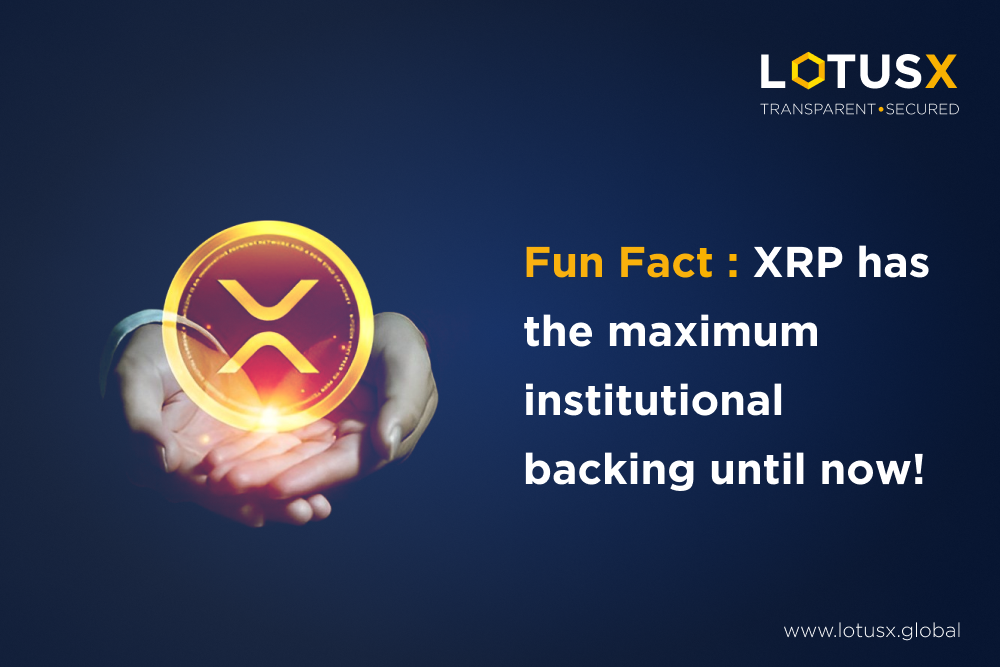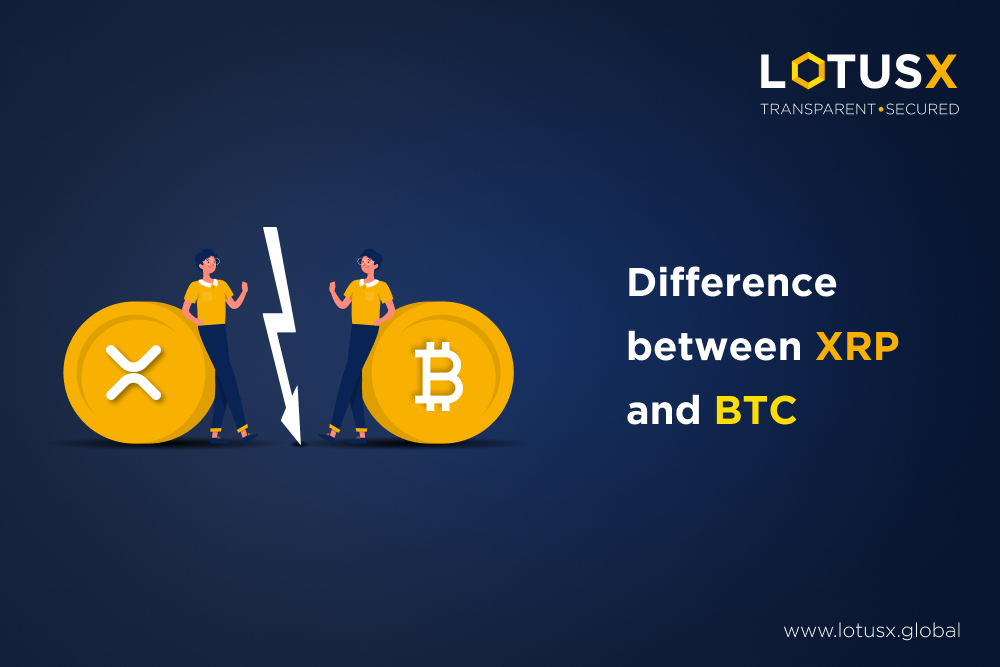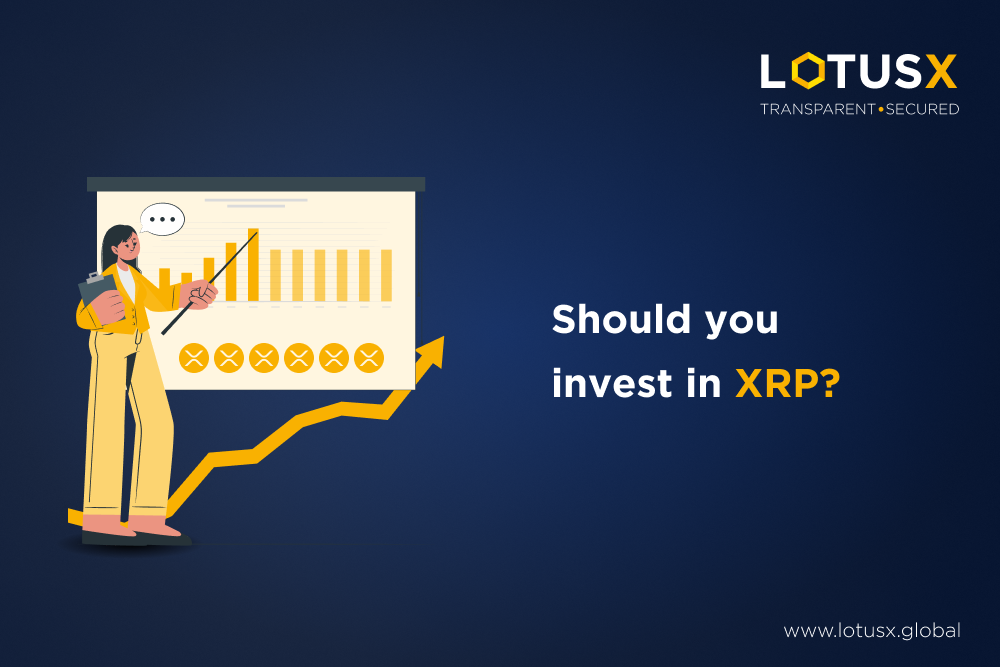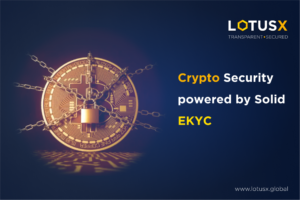Ripple, launched in 2012, is a name synonymously used to describe its native currency and a payment platform, much like Ethereum. The platform is called RippleNet, and the token is called XRP or Ripple XRP.
What is Ripple?
Ripple (XRP) is a well-renowned cryptocurrency and the only one with maximum institutional backing until now. It is a payment platform that processes international money transfers using blockchain technology. Ripple offers faster processing time and low transaction fees. It has also partnered with multiple financial institutions that use the technology. Ripple was initially called OpenCoin, with a maximum supply of 100,000,000,000 units of XRP. Like Bitcoin, a cap on the maximum number of minted coins adds to the token’s scarcity, and the demand and supply factor begins to work, keeping the value soaring.
XRP was predicted to reach $0.5 by December 2023 and $1.2 by the end of 2025. However, to cut a long story short, XRP is currently trading (as of writing) at $0.77, which is a whopping 66% in one day. So who knows if XRP may beat its prediction this very year?
“Ripple is not a cryptocurrency. It has a native cryptocurrency called XRP.”

How does Ripple work?
Ripple network native cryptocurrency, XRP, uses a consensus model to validate transactions. For a transaction to be validated, most validators on the network must accept it. RippleNet is a platform that aims to provide financial institutions with fast, cheap, and easy cross-border transactions. It is steadily pacing towards replacing SWIFT, a payment system that the banks currently use to support international payments. Here are a few advantages of using Ripple for international transactions:
- On the Ripple platform, XRP can be used as a bridge currency, giving banks and other financial institutions a cheaper alternative to trade.
- The transaction fee is a fraction of a cent even when XRP is at an all-time high.
- The transaction processes time is an average of five seconds.

Difference between Ripple XRP and Bitcoin
While both XRP and Bitcoin have a cap on the total number of coins that can be minted, there are significant differences between the two. Here are a few:
- One of the most significant differences between the two coins is that XRP is tied to a private company. While both the tokens are decentralised, XRP is owned by Ripple, a private company.
- XRP is cheaper, faster, and more energy efficient than Bitcoin due to its consensus model. It can process transactions within seconds and with minimal energy consumption. On the contrary, Bitcoin transactions take average 10 minutes to get verified. This makes XRP one of the most environment-friendly cryptocurrencies.
- Bitcoin and XRP have different models to verify transactions. Bitcoin uses mining to develop and distribute new coins and also validate transactions. It requires the validators to solve complex mathematical problems to add a block of transactions. However, XRP uses a consensus algorithm, which requires most participants to accept the transaction for it to be sanctioned.
- There is a difference between Bitcoin and XRP regarding the total number of tokens supplied. Where Bitcoin has a supply cap of 21 million coins, XRP has a supply cap of 100 billion tokens. This is also one of the biggest reasons for the massive price difference.
Strengths and weaknesses of Ripple’s XRP
| Strengths | Weaknesses |
| Faster and cheaper transactions. | The consensus protocol is considerably less secure than other methods, such as mining. |
| Ease of use among small business owners for secure transfers. | Since it is private, XRP has a controversy etched to it. |
| XRP is convenient as many financial institutions are currently using the payment network. | Many banking partners use the Ripple network but not the XRP cryptocurrency. |

Should you consider investing in Ripple XRP?
Ripple (XRP) can potentially replace outdated money transfer systems banks and other financial institutions use. Its partnerships with banks are an excellent stature for the currency, and any further progress in legality can shoot up the token’s price. Since a private company runs XRP, it has been on the receiving end of criticism by the crypto community. Especially after the SEC lawsuit, several exchanges dropped XRP. Hence, Ripple’s XRP is a risky token to play with.
Sprouting cryptocurrency regulations are likely to affect the price of all cryptocurrencies. However, XRP has the edge over other crypto tokens and can stand the storm. New regulations are less likely to create fear amongst investors and result in panic. On the contrary, legal intervention can lead to a price increase of XRP. This is exactly what happened after the judge ruled that open market sales of cryptocurrency on Ripple didn’t comprise securities; XRP skyrocketed.
Cryptocurrencies are volatile, and XRP is in an even more difficult position. The crypto market is unpredictable since it is not regulated. However, if Ripple continues to grow, it can also fetch huge returns on a small investment. Please remember that under no circumstance should you consider this as investment advice. Investing in cryptocurrencies can fetch huge returns but can also incur huge losses. Investment in the crypto market is often considered riskier than the stock market.

Concluding Thoughts!
Digitisation is one of the “it” things in the current scenario. With Fed and central bank constantly changing the interest rates, exchange rates, and legal systems, it is difficult for financial institutions to cope. Hence, they seek alternative solutions and are more inclined toward technical solutions like Ripple. As of now, many banks have already incorporated the Ripple network into their international money transfer system. Ripple coming up with the ability to offer smart contracts soon is the much-required boost to its popularity. Growing popularity and adoption by the banks will successfully drive up the price of XRP.




